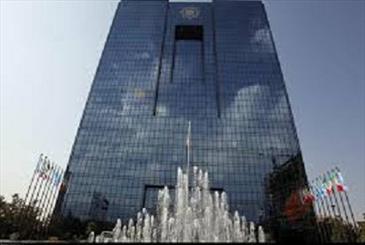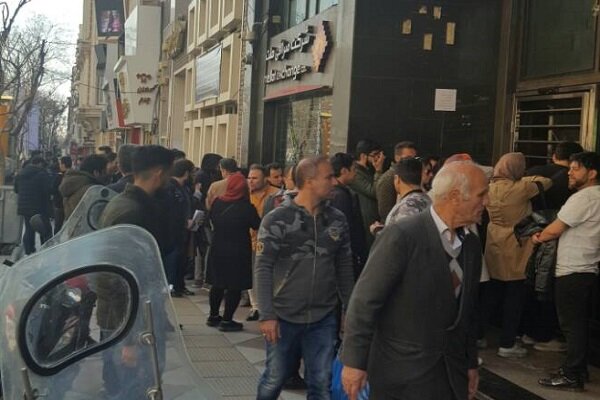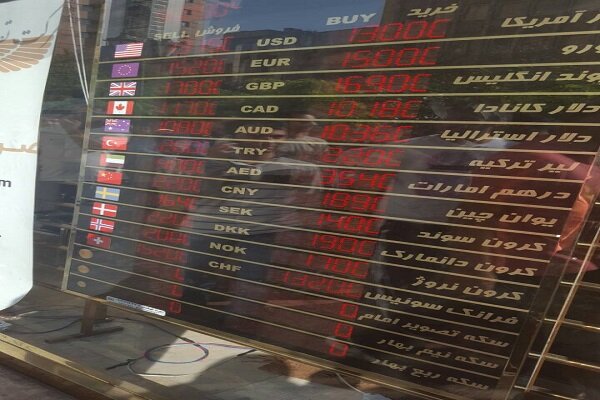
While in early autumn, the Iranian national currency-the rial-was plunging against the US dollar on a daily basis, the volatile foreign exchange market has been brought under control through proper measures that the Iranian central bank has taken since then.
In early autumn 2018, the price of each US dollar had risen to more than 190,000 I rials while it has been now for more than 5 months that the price is standing at 120,000 rials each dollar, which indicates a remarkable recovery. What matters more here is the fact that foreign pressures with the aim destroying the Iranian economy have increased much more since then. The rial has regained more than 40% of its value. In fact, through the measures the Central Bank of Iran took in coordination with other apparatuses of the Iranian government, the prices started to fall and in fact, reversed the course.

The recovery of the rial comes at a time when the new round of US sanctions came into force in the middle of autumn and many had a lot of savings in US dollars for the fear of further depreciating of the rial and with the false hope that they could sell their dollars in the free market at higher prices soon after.
The recovery has been attributed to new CBI’s forex policies and restrictions on banking transactions and purchases of dollars as well as a ban on money send-outs by unauthorized foreign exchange shops.
The other measures that the CBI took to quell the volatile exchange market included removing all restrictions on the import of foreign currencies and gold into the country in addition to instructing the market through injecting hard currency into the market through licensed exchange shops at lower prices than those of the free market.
Launch of NIMA
The integrated Iranian FX platform, the integrated Iranian FX platform, also known as the ‘NIMA’ was launched by the CBI to facilitate currency trades between market participants who include exporters and importers who need foreign currencies. The CBI launched NIMA, which is a CBI-administered online trading platform through which the exporters are obliged to sell their foreign currency earnings to importers in need.
Although there have been complaints against the exporters who did not bring their dollar earnings to NIMA, it has relatively played an effective role in calming the volatile situation along with other CBI measures.
When the prices were plunging, the CBI ordered the banks and exchange shops to buy the US dollars that people were bringing to sell in the market to avert further losses. According to Mehr News Agency report in late November, the CBI-sponsored exchange shops and banks would buy people’s dollars at higher prices than the free market in order to help the ordinary people not lose more value of their properties. There was time when the prices in the free market went down below the prices offered by CBI-sponsored forex exchange shops. The more hurriedly ordinary people rushed to the market to sell their dollars, the lower the US dollar prices went down in the market.
The downfall of US dollar against the rial accelerated as the EU foreign policy chief Federica Mogherini announced few days after the US sanctions took effect on November 5, 2018 that the promised financial mechanism to Iran would be in place before the year’s end. Furthermore, the China’s Bank of Kunlun resumed receiving payments from Iran despite the risk of US sanctions.
An organized FX market
On November 22, 2018, the newly appointed Governor of the Central Bank of Iran (CBI) Abdolnaser Hemmati stressed the need for bringing the free and official markets into a one single organized market to fill the gap between the prices in the free and the official markets in order to bring the market oscillation under further control. Hemmati said that the government recognized the existence of the free market but, he said that it needed to be organized and the gap between the prices of the free and the official markets needed to be filled in order to help both the importers and exporters.
He said that people must be able to refer to the exchange shops and bring their banknotes into the market freely to contribute to the formation of the organized market.
The governor added that establishing an organized foreign banknotes market will remain a significant goal of the CBI, an aim that has yet to be materialized.
As it was mentioned above, there was time when the prices by CBI-administered exchange shops were lower those of free. This shows that the CBI governor had achieved his goal of bringing the differences between prices in the free and official markets in order to set up an organized market.

Speaking to Iranian state TV-channel 2 (IRIB 2) last week, Hemmati said that the organized market would be launched within a month or so, while he added that all the necessary steps have been taken so far to launch the organized market within next two weeks. But, he said that the central bank preferred to postpone the launch of the new mechanism until the final days of the first month of the new year of 1398, which begins on March 21.
EU’s breach of promise had no negative impact on rial’s recovery
As time passed, the EU delayed its promised payment system to help European countries to get around US sanctions with the hope of keeping Iran nuclear deal alive, but the delay did not stop the trend of recovery of the rial against the foreign currencies. The CBI continued to interfere in the market as it still does, a policy which has proven to be very effective in stabilizing the volatile market. By the end of autumn and start of the winter each US dollar fell as low as 98,000 rials in spite of huge foreign plots against the economy, especially the rial.
Finally, the EU three major power launched their previously-promised business channel to continue legal trade with Iran under the US sanctions as part of their commitments to Iran nuclear deal. The Instrument in Support of Trade Exchanges (INSTEX) was the special-purpose vehicle (SPV) which was established in January 2019 by France, Germany and the United Kingdom to facilitate non-dollar trade with Iran. The INSTEX is headquartered in Paris, France, and is headed by German national Per Fischer, who formerly served as Head of Financial Institutions at Commerzbank, between 2003 and 2014.
The EU trade mechanism has yet to be launched. Meanwhile, Iran has repeatedly warned Europe against the delays in its launch. While the European countries have not taken any practical steps to help Iran circumvent US secondary sanctions, the Iranian central bank with the help of other economic apparatuses have been able to thwarts the plots by the US Treasury against the rial.
Conclusion
All in all, one can say that the CBI has brought the forex market under control despite some recent increase in the prices of foreign currencies against the rial. When this contribution is being typed down, the price of each US dollar is oscillating between 120-130,000 rials, which still is much lower the prices in early last autumn despite the fact the US harshest economic sanctions. The recent increase can be attributed to an increase in demands for foreign currencies, most notably the US dollar, by Iranian citizens who travel abroad on new year vacations.
The CBI governor recently blamed the increased demands for foreign currencies by the Iranian citizens for holidays purposes abroad as well as the lack of action in approving the FATF-related bills by the Iranian Expediency Council so far for the recent slightly increased prices.
Hemmati has expressed hope the launch of the above mentioned organized foreign currencies market would further help the CBI to keep the prices down and prevent any other shocks in the market in the future.
Source: Mehrnews







